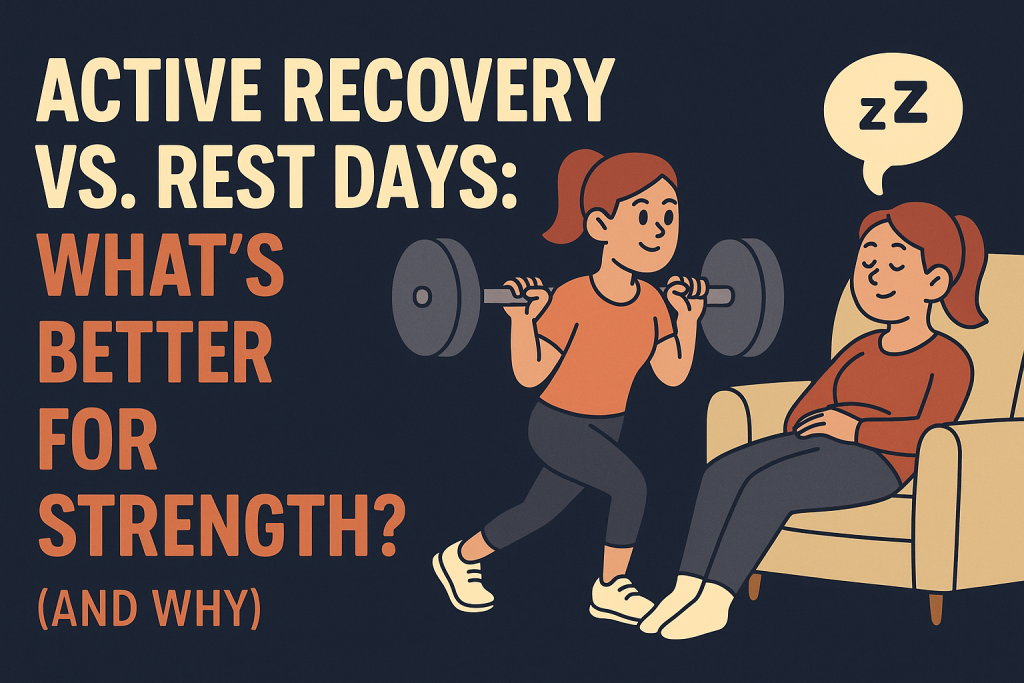
If you lift weights, you already know how important your workouts are. But did you know that what you do on your days off is just as important?
Rest days aren’t just about taking a break — they help your body get stronger. Some people take complete rest days where they do very little. Others use “active recovery,” where they move their body but avoid hard workouts.
So, which is better for building strength: full rest or active recovery? The answer depends on how you feel, how much you train, and what your goals are. Let’s break it down in a simple way with some real science to back it up.
What Is Active Recovery?
Active recovery means you stay lightly active on your days off. You don’t lift weights or push yourself hard, but you move your body enough to help your muscles feel better.
Examples of active recovery include:
- Going for a walk or easy hike
- Doing some light yoga or stretching
- Riding a bike at an easy pace
- Playing a casual sport or activity
- Gentle swimming or mobility work
The idea is to boost blood flow, help your muscles recover, and reduce soreness — without tiring yourself out.
What Is a Full Rest Day?
A full rest day means you completely take it easy. You don’t exercise at all. You might relax on the couch, read, watch TV, or just go about your normal daily activities without any extra exercise.
Full rest days are useful when your body feels really beat up. It’s a chance to let your muscles, joints, and nervous system recover fully.
What Science Says About Rest vs. Active Recovery
Several studies have looked at whether active recovery or full rest is better for recovery after workouts.
✅ A 2018 review in Frontiers in Physiology showed that active recovery helps people feel less muscle soreness after workouts. It also helps muscles recover quicker without hurting strength or performance (Dupuy et al., 2018).
✅ A 2017 review in Sports Medicine found that active recovery is especially good for helping people recover faster between workouts or between hard sets of exercise (Tavares et al., 2017).
In simple terms, moving a little can help you feel better faster.
Benefits of Active Recovery
- Helps reduce muscle soreness
- Increases blood flow, which speeds up recovery
- Keeps your body from feeling stiff
- Helps improve your mood and energy
- Doesn’t leave you too tired for your next workout
When Full Rest Days Are Better
Even though active recovery has benefits, sometimes it’s better to just rest completely. Here’s when full rest is a good idea:
- After very hard training cycles
- When you feel sick or run down
- If you didn’t sleep well
- If you have an injury
- If you feel mentally or physically burned out
Full rest days are important for long-term strength gains, especially after hard workouts that leave your body feeling worn out.
How Many Rest Days Should You Take Each Week?
Here’s a simple guide:
| Lifting Schedule | Rest Day Advice |
|---|---|
| 2–3 days/week | 3–4 rest days (some active, some full) |
| 4 days/week | 2–3 rest days (mostly active recovery) |
| 5–6 days/week | 1–2 rest days (at least one full rest day) |
Mixing active recovery and rest days works well for most people.
Best Active Recovery Ideas
On active recovery days, try these:
- 30-minute easy walk
- Yoga or stretching session
- Low-effort swimming or cycling
- Foam rolling or mobility work
- Playing catch, shooting hoops, or light recreational activity
Aim for about 20 to 40 minutes — enough to feel good, not tired.
Final Thoughts: What Should You Do?
Both rest days and active recovery are useful. Most people feel better and recover faster by adding light movement on rest days. But full rest days are important too, especially after hard weeks or when you feel tired.
The key is to listen to your body:
- Feeling sore and stiff? Try active recovery.
- Feeling really wiped out? Go for full rest.
Balancing both helps you recover better, avoid burnout, and keep getting stronger.